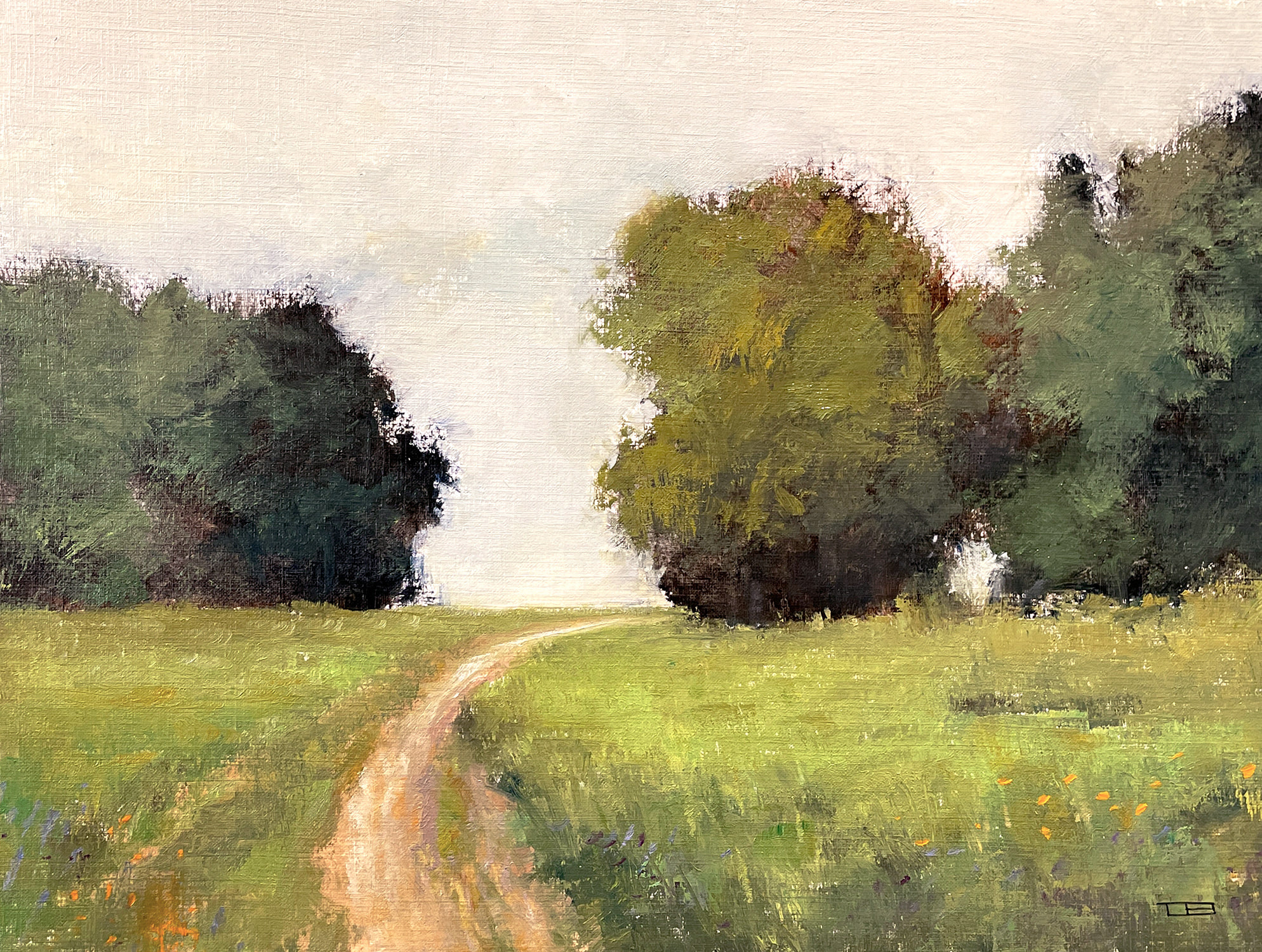Oil Paintings for Sale Featuring Famous International Painters
Oil Paintings for Sale Featuring Famous International Painters
Blog Article
Checking out Everything About Oil Paints: An Overview to Recognizing Their Charm and Value
Oil paintings have mesmerized audiences for centuries, offering a glance into the artistic proficiency of different ages. Their abundant background is linked with cutting-edge methods and extensive psychological expression. Recognizing the products and methods behind these artworks can enhance admiration. In addition, the marketplace for oil paints provides chances for enthusiasts and investors alike. As one explores this remarkable world, the inquiry develops: what makes an oil painting truly beneficial?
The History of Oil Paint: A Journey Via Time
Oil painting has roots that date back to ancient times, it really grew throughout the Renaissance, when artists uncovered its versatility and abundant shade potential. Early examples can be traced to the 7th century, with strategies progressing especially throughout cultures. The medium ended up being popular in Northern Europe in the 15th century, specifically through the works of musicians like Jan van Eyck, who pioneered its use for detailed realistic look and vibrant tones. This period noted a departure from tempera paints, permitting greater deepness and structure. As oil paint spread, it affected plenty of artists, leading to masterpieces by distinguished numbers such as Leonardo da Vinci and Rembrandt. The medium's tradition continues, forming the art globe well right into modern times.
Comprehending Oil Repaints: Materials and Techniques
As musicians explore the globe of oil paints, they run into a varied variety of products and strategies that define this medium. The primary components of oil paint consist of pigments, which give shade, and drying out oils, such as linseed, that bind the pigments and facilitate application. Various additives can modify the paint's appearance and drying out time, enhancing adaptability. Techniques like glazing, where transparent layers are accumulated, and impasto, which involves using thick paint, enable various aesthetic impacts. In addition, the use of brushes, palette knives, and also fingers can create unique textures and coatings. Recognizing these products and strategies allows musicians to completely reveal their imagination and achieve the preferred effect in their art work.
The Function of Shade in Oil Paints
Color plays a pivotal duty in oil paints, affecting both aesthetic allure and psychological resonance. Comprehending color theory essentials, consisting of the connections in between tones, can enhance an artist's capacity to communicate state of mind and ambience. Additionally, understanding shade blending strategies enables greater depth and richness in a paint's combination.

Color Theory Fundamentals
Recognizing shade theory is vital for musicians functioning with oil paints, as it develops the foundation for producing harmonious and visually interesting structures. Color theory incorporates the research study of how colors connect, the color wheel, and the relationships in between primary, second, and tertiary shades. Musicians make use of corresponding shades to enhance contrasts and develop centerpieces, while comparable colors advertise unity and cohesiveness within a piece. Furthermore, the ideas of trendy and cozy colors affect the assumption of depth and space in a painting. Grasping these concepts allows artists to adjust shade properly, guiding the visitor's eye and communicating their designated message. Proficiency of shade theory eventually enhances a musician's ability to share feelings and ideas through their work.
Psychological Effect of Color
The psychological influence of color in oil paintings plays an important function in how visitors link and perceive with artwork. Shades evoke details feelings and moods, influencing the audience's emotion. For instance, warm hues like reds and oranges can create a sense of warmth and energy, while amazing tones such as blues and eco-friendlies typically stimulate peace or introspection. Artists strategically pick shade combinations to improve narrative aspects, assisting the target market's emotional journey. The saturation and comparison of colors additionally enhance these impacts, attracting focus and creating focus. Eventually, the interaction of colors in oil paintings not just enhances their visual appeal however likewise functions as a powerful tool for psychological expression, enriching the visitor's experience and analysis.
Color Combining Techniques
While several elements of oil paint add to the general make-up, mastering shade mixing techniques is necessary for achieving desired results and deepness. Shade blending can be come close to via numerous techniques, consisting of the additive and subtractive processes. Additive mixing involves integrating colors of light, while subtractive blending relies on pigments, where colors blend to produce brand-new tones. Musicians commonly make use of a minimal scheme to produce unified works, understanding the partnerships between main, additional, and tertiary colors. Strategies such as glazing and scumbling better enhance depth and luminosity. By skillfully blending shades, a musician can stimulate feelings, develop prime focus, and attain a feeling of realism, eventually boosting the painting's psychological and visual influence.
Famous Oil Painters and Their Iconic Functions

Renowned for their mastery of color and technique, oil painters have actually developed several of the most well known art work in background. Renowned artists like Vincent van Gogh captivated target markets with his stirring brushwork in "Starry Night," while Claude Monet's "Impression, Sunup" prepared for Impressionism. Leonardo da Vinci's "Mona Lisa" remains a long-lasting icon of creative wizard, showcasing his skill in capturing human expression. Rembrandt's "The Evening Watch" shows his cutting-edge usage of light and darkness. Other click here notable figures consist of Pablo Picasso, who revolutionized modern art with his bold experimentation in jobs like "Les Demoiselles d'Avignon," and Georgia O'Keeffe, whose lively depictions of landscapes and blossoms assisted specify American innovation. Each artist's special design contributed greatly to the oil painting landscape.
How to Assess the High Quality of an Oil Paint
Evaluating the quality of an oil paint involves a mindful evaluation of workmanship strategies, along with an analysis of shade and make-up. Observing brushwork, layering, and the application of paint can disclose the artist's skill level. Additionally, the interaction of colors and the general setup of aspects contribute considerably to the painting's visual worth.
Assessing Workmanship Techniques
A precise assessment of craftsmanship techniques is necessary for identifying the top quality of an oil painting. Evaluators need to initially examine the application of paint; thick, distinctive brushstrokes might suggest a knowledgeable hand, while excessively consistent applications can indicate an absence of deepness. oil paintings for sale. The layering method is also vital; the existence of lusters and differed density can improve brightness and intricacy. In addition, the quality of the materials used, such as the canvas and pigments, plays a considerable role in toughness and total aesthetic. Focus to information in components like sides and shifts in between colors mirrors the musician's dedication to their craft. Ultimately, these methods add to the paint's psychological impact and market worth, serving as indicators of the musician's skill and intent
Examining Shade and Structure
While assessing the high quality of an oil paint, one must concentrate on the interplay of shade and structure, as these components are basic to the art work's overall impact. Shade choices can develop and evoke emotions state of mind; consequently, the musician's scheme need to be analyzed for harmony and comparison. A well-balanced composition directs the customer's eye and creates a feeling of unity. Musicians usually use strategies like the rule of thirds or leading lines to boost visual passion. Additionally, the usage of light and shadow can include deepness, enhancing the three-dimensionality of the paint. Eventually, an effective oil painting weds shade and make-up, involving the customer and welcoming a deeper admiration of the musician's vision and method.
Taking care of and Preserving Oil Paintings
Appropriate care and preservation of oil paints is necessary for preserving their integrity and durability. To protect these artworks, it is important to present them far from straight sunshine, which can cause fading and staining. Maintaining a steady environment with regulated temperature and moisture additional help in avoiding damage. Cleaning up ought to be done carefully using a soft, dry cloth, avoiding any kind of harsh chemicals that can harm the paint or varnish. Normal examinations for signs of damage, such as breaking or flaking, are suggested. When keeping or moving oil paints, appropriate cushioning and framing are essential to avoid physical harm. Inevitably, diligent treatment adds to the aesthetic allure and worth of oil paints in time.
The Market for Oil Paintings: Investing and collecting
Understanding the market characteristics for oil paints is crucial for financiers and enthusiasts alike. The worth of these art work is affected by numerous aspects, consisting of the musician's online reputation, historical significance, and existing fads. Collectors usually look for items that resonate directly while considering prospective recognition in value. Galleries and public auctions function as primary places for trading, with costs varying based upon need and rarity. Buying oil paintings calls for research into the market, as well as an understanding of authenticity and provenance. In addition, emerging artists may supply chances for significant returns, while developed names can command high prices. Generally, a critical method to accumulating can yield both aesthetic enjoyment and economic rewards.

Regularly Asked Concerns
What Are the Environmental Influences of Oil Paint Materials?
The ecological influences of oil paint materials include the launch of unstable organic compounds (VOCs), hazardous waste generation, and source removal for pigments. These variables contribute to contamination and eco-friendly degradation, elevating problems amongst ecologically aware artists and customers.
How Do Various Canvases Affect Oil Painting Results?
Different canvases influence oil painting results substantially. Appearance, surface area, and absorbency quality can alter paint application, drying out times, and shade vibrancy. Musicians often choose details canvases to accomplish wanted effects and improve their artistic expression.
Can Oil Paintings Be Restored if Damaged?
Oil paintings can undoubtedly be restored if harmed. Specialist conservators utilize different strategies to fix splits, tidy surface areas, and address staining, guaranteeing that the art work keeps its initial appeal and worth for future generations.
What Are the Signs of an Initial Oil Paint?
The signs of an initial oil paint consist of noticeable brush strokes, structure variations, and an unequal canvas weave (oil paintings for sale). Furthermore, authenticity might be verified via provenance, signatures, and the visibility of a varnish layer unique to oil mediums
Just How Has Technology Influenced Modern Oil Painting Techniques?
Innovation has actually considerably influenced modern-day oil painting techniques by introducing electronic tools for preparation, enhanced products for texture and long life, and online systems for offering and sharing art, thereby broadening musicians' innovative opportunities and audience reach. Oil paint has roots that date back to old times, it truly flourished throughout the Renaissance, when musicians found its flexibility and rich shade capacity. The emotional impact of shade in oil paints plays a crucial role in just how customers attach and view with artwork. While several elements of oil painting add to the overall structure, understanding shade mixing techniques is necessary for accomplishing preferred results and deepness. Assessing the high quality of an oil paint entails a careful assessment of craftsmanship methods, as well as an evaluation of color and structure. While assessing the quality of an oil paint, one should focus on the interaction of shade and composition, as these components are fundamental to the art work's general impact.
Report this page